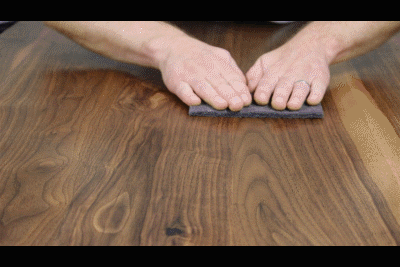
No more Scratches
/ch/ /ch/ /ch/
Rationale
This lesson will help children recognize /ch/ and learn the graphemic representation of the phoneme spelled with the letters ch. Students will recognize /ch/ in spoken words after they learn a sound analogy /ch/ /ch/ /ch/, the sound uncle Chuck’s sander makes. They’ll listen and practice saying /ch/ in a tongue tickler, recognize it in spoken words, and then use the letters ch as a signal to decide if it’s in a written word. Afterwards, they’ll listen for it in a short story and learn how to write it on primary paper.
Materials
Gif of /ch/ sanding on an ipad. Hand mirrors. Poster of ch or write it large on the board. Card with chalk written on it. Phonetic cue cards: chop, hip, church, vanilla, cherry; primary paper, Genie book to read: Chips for the Chicks from Lad and His Pals.
Procedures
1. Explain: Sometimes we hear unusual sounds in words and we don’t know what letters tell us to make those sounds. When we hear /ch/ we might think of the letter h because we hear /ch/ in the letter’s name. But /ch/ is not spelled with an h.
2. Review: It takes two letters to make /ch/, c and h. Ch written together say /ch/ the sound I hear when my uncle Chuck is using his sander. /ch/ch/ch/. He’s smoothing out the scratches with /ch/ch/ch/. [Show animated sanding gif on ipad to small group or project on a board for a whole class.] Write ch on the board or hold up poster-size ch.
3. Model: If I want to find /ch/ in a word first I think about what my mouth is doing when I say /ch/. My lips are open and make a little rectangle when I look in the mirror. My teeth are clenched together and the tip of my tongue is right behind them. I’m not using my voice but there’s air coming out, making that sander noise. Look in the mirror as you say /ch/. What is your mouth doing? I’m going to look for that mouth shape when I watch someone speak to see if they are saying /ch/.
4. Oral practice: Let’s practice finding /ch/ in a Tongue tickler first. Listen for /ch/ as I tell the story. I have an uncle named Chuck who works with wood. He makes beautiful furniture but it takes a lot of work. Last week Chuck chopped and chiseled a chunk of cherry wood. Let’s say that together, but whenever you hear /ch/ use your sander to get out the scratches: "Chuck chopped and chiseled a chunk of cherry wood." Now let’s stretch it out slowly and sand that wood whenever we hear /ch/. [Be sure to demonstrate circular sanding motion while saying and stretching /ch/ in each word.]
5. Listening Practice: Now listen for it in a few words I’m going to say: Do you hear /ch/ in chop or crush? ham or cheese? turkey or chicken, inch or foot?
6. Writing practice: Pass out primary paper and demonstrate how to write it on the board, while explaining the sequence of features. Say: Here is how I make little c. I start under the fence and start to make a little circle moving left up to the fence, then around to the sidewalk, then swing back up toward the fence but stop just after I leave the sidewalk. That's little c. Next, I start at the rooftop, drop straight down to the sidewalk, then bounce up the line to the fence where I make a hump that drops back down to the sidewalk. That's h. Now it’s your turn to write a line of ch’s on the top row. When you are done, raise your hand for a star.
7. Phonetic cue reading: I know that I can write ch but how will those letters help me read? I want to see if I can use the letters ch to find it in a written word. First I look at the word. Do I see c and h together? Did I hear it at the beginning or the end of the word? I see a word chalk. It starts with ch. It must say /ch/. Say: See if you can use the beginning letter to decide which word these are. Is this chop or pop, hip or chip, temple or church, vanilla or chocolate, cherry or apple?
8. Use it with connected text: Now I’m going to read a story called Chips for the Chicks from Lad and His Pals. [Book talk] Lad is always hungry. Sometimes he gets so excited when he sees food that he just completely loses control. Let’s find out what kind of trouble lad has gotten into this time. [Read a second time.] This time when I read, listen for /ch/ in the words I’m saying. Watch my lips too. If you hear /ch/ as I’m reading, or see those rectangle lips, quietly sand that wood and whisper /ch/.
9. Assess: I have a coloring sheet that has some pictures with words. First draw lines from the ch in the middle of the page to the pictures that represent words. Be sure the words have ch together in them and that the word representing the picture says /ch/. Afterward color those /ch/ pictures with your favorite colors.
References